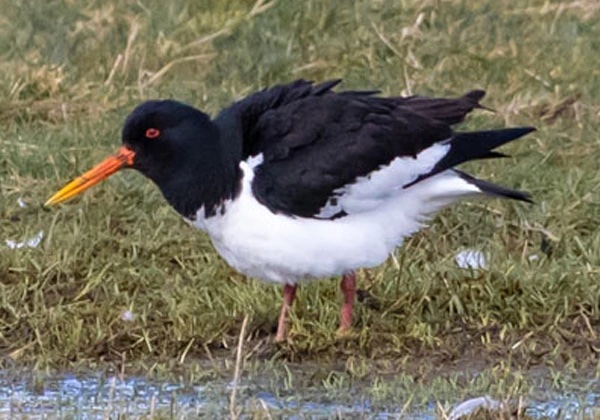Oystercatcher
- Home
- Why We Do It
- Conservation
- Oystercatcher
Key Facts
- Nest shallow scape amongst grass tussocks or on shingle
- 2-3 eggs, 1 brood, April – July
| Scientific Name: | Haematopus ostralegus |
| Number in Britain: | 92,500 breeding pairs |
| Conservation Status: | |
| in UK | Amber |
| in Europe | Vulnerable |
| Globally | Near Threatened |

This very striking black and white wader around 16/17 inches long has brilliant orange/red legs, bill and eyes.
Very vocal when it has young and once more like all waders likes damp ground where it can probe for food. Unlike some wading birds, the Oyster Catcher feeds it’s young by foraging for them and carrying food to them if it is not close to hand.
The four light-buff eggs heavily marked with black are laid in a simple scrape on bare earth or a sand/gravel base.
